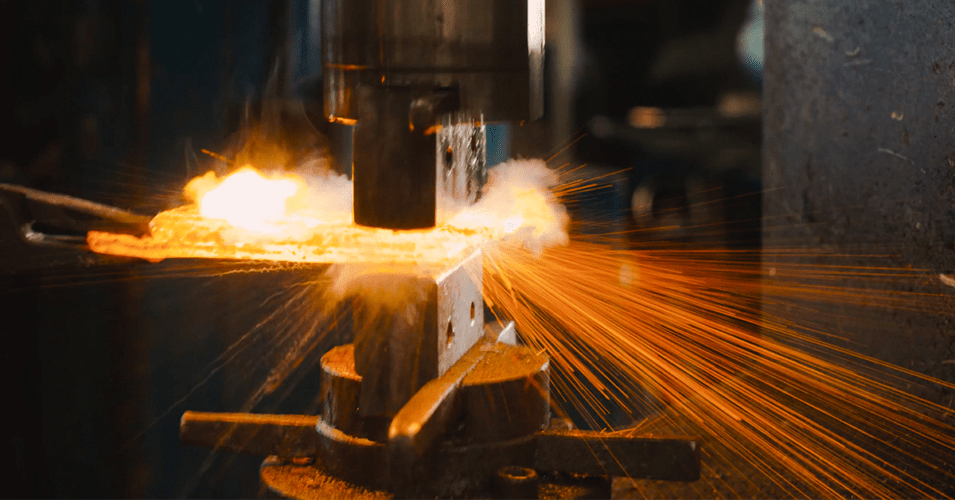The art of forging, dating back thousands of years, has played a crucial role in the development of civilization. Initially, it was a manual process, with blacksmiths tirelessly shaping metal through hammer blows and heat. Today, hot forging technology has evolved into a highly sophisticated and automated process that’s crucial in various industries, from automotive to aerospace. In this blog, we’ll explore the exciting advancements in hot forging technology, shedding light on how it continues to shape our modern world.
Understanding Hot Forging
Before delving into the advancements, let’s briefly understand what hot forging is. Hot forging is a metalworking process that involves heating a piece of metal to a specific temperature and then using mechanical force, such as a hammer or press, to reshape it into a desired form. This process is commonly used to produce components with exceptional strength, durability, and precision.
Advancements in Hot Forging Technology
- Computer Numerical Control (CNC) Automation: One of the most significant advancements in hot forging technology is the integration of CNC automation. CNC-controlled machines allow for precise control over the forging process, resulting in components with incredibly tight tolerances. This automation not only improves the quality of the finished products but also reduces labor costs and enhances overall efficiency.
- Simulation Software: Modern hot forging relies on advanced simulation software that enables engineers to model and analyze the forging process before any metal is actually heated and shaped. This simulation technology helps optimize the design of dies and tooling, reducing waste and production time while ensuring the highest quality components.
- Material Advancements: Hot forging isn’t just about shaping metal; it’s also about improving material properties. Researchers have developed new alloys and heat treatment processes that allow for the creation of stronger and more lightweight components. These advancements are critical in industries where weight and strength are paramount, such as aerospace and automotive manufacturing.
- Energy Efficiency: As sustainability becomes increasingly important, hot forging technology has also evolved to be more energy-efficient. Induction heating systems, for example, offer precise and efficient heating, reducing energy consumption and emissions compared to traditional heating methods.
- Hydraulic Presses: Hydraulic presses have become more sophisticated and powerful, allowing for the forging of larger and more complex parts. These presses provide the necessary force to shape metals into intricate designs while maintaining high precision and repeatability.
- Real-time Monitoring: In the age of Industry 4.0, real-time monitoring and data analysis have found their way into hot forging processes. Sensors and data analytics tools are used to monitor factors like temperature, pressure, and material flow, allowing for immediate adjustments and quality control during the forging process.
- 3D Printing Integration: Combining hot forging with 3D printing technology opens up new possibilities. Some companies are experimenting with 3D-printed preforms that are then hot forged to achieve a perfect balance between complex geometries and material strength.
- Customization and Small Batch Production: Hot forging technology advancements have made it more feasible to produce customized components and small batch runs cost-effectively. This is particularly beneficial for industries where diverse product offerings are required to meet specific customer needs.
Applications of Advanced Hot Forging
The advancements in hot forging technology have a far-reaching impact across industries:
- Automotive: Hot forging is integral to the automotive industry, where it’s used to produce critical components like engine parts, transmission gears, and suspension components.
- Aerospace: In aerospace, hot forging is essential for manufacturing lightweight and high-strength components used in aircraft and spacecraft.
- Oil and Gas: Hot forged parts are used in the oil and gas industry for critical applications like drilling equipment, valves, and pipelines.
- Construction: Structural components like bolts, anchors, and fasteners are often hot forged to ensure they meet stringent safety standards.
- Tool and Die Making: Hot forging technology advancements benefit tool and die makers, allowing them to create more durable and precise tools for various industries.
Hot forging technology has come a long way from the manual processes of ancient blacksmiths. With advancements in automation, materials, energy efficiency, and real-time monitoring, it continues to play a crucial role in shaping the modern world. As industries demand stronger, lighter, and more complex components, hot forging technology will undoubtedly continue to evolve, pushing the boundaries of what’s possible in metalworking and manufacturing. It’s a testament to human ingenuity and our unwavering commitment to progress, forging ahead into a brighter and more efficient future.
